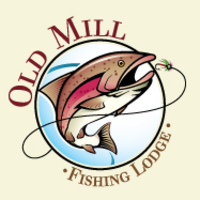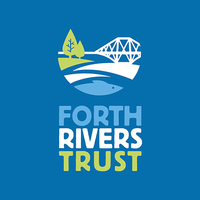Many thanks to The Old Mill Fishings for facilitating this camera's location and to The Forth Rivers Trust &
Stirling Council for capitally funding its installation.
The River Forth originates in the mountainous region known as the Trossachs, located approximately 30 km (19 mi) west of Stirling. The eastern slopes of Ben Lomond contribute to its source as the Duchray Water, which merges with the Avondhu River flowing from Loch Ard. The confluence of these two streams marks the official beginning of the River Forth. From there, it meanders in an easterly direction, passing through Aberfoyle and converging with the Kelty Water around 5 km downstream. Continuing its course, the river enters the expansive and flat Carse of Stirling, encompassing Flanders Moss. Just west of the M9 motorway, it is joined by the River Teith, which itself drains Loch Venachar, Loch Lubnaig, Loch Achray, Loch Katrine, and Loch Voil. Progressing eastward, the next tributary is the Allan Water, located just east of the M9. The River Forth then flows into the historical port city of Stirling, where it widens and becomes influenced by the tides. This location marks the site of the river's last seasonal ford. Continuing eastward from Stirling, the Forth accepts the Bannock Burn from the south before passing the town of Fallin. It subsequently encounters two towns in Clackmannanshire: Cambus, where it merges with the River Devon, followed closely by Alloa. Upon reaching Airth on the river's south shore and Kincardine on its north shore, the river significantly widens and transitions into the Firth of Forth. Upstream from Stirling, the river maintains a narrow profile and can be crossed at various points. However, after merging with the Teith and Allan, the river expands, necessitating the construction of substantial bridges. A bridge has crossed the river at Stirling since at least the 13th century, and it served as the easternmost road crossing until 1936 when another bridge was opened at Kincardine. The Clackmannanshire Bridge, situated upstream from the Kincardine Bridge, was inaugurated on November 19, 2008. Previously, a railway bridge known as the Alloa Swing Bridge connected Alloa on the northern shore with Throsk on the southern shore. It was operational from 1885 until its closure and subsequent partial demolition in 1970, leaving only the metal piers intact. Further downstream, linking North Queensferry and South Queensferry, stands the renowned Forth Bridge—a railway bridge that was completed in 1890—and the Forth Road Bridge, which opened in 1964. To the west of the Forth Road Bridge lies the Queensferry Crossing, construction of which commenced in 2011, and it was officially opened on September 4, 2017. The River Forth is renowned as one of the prominent salmon rivers in Britain.







